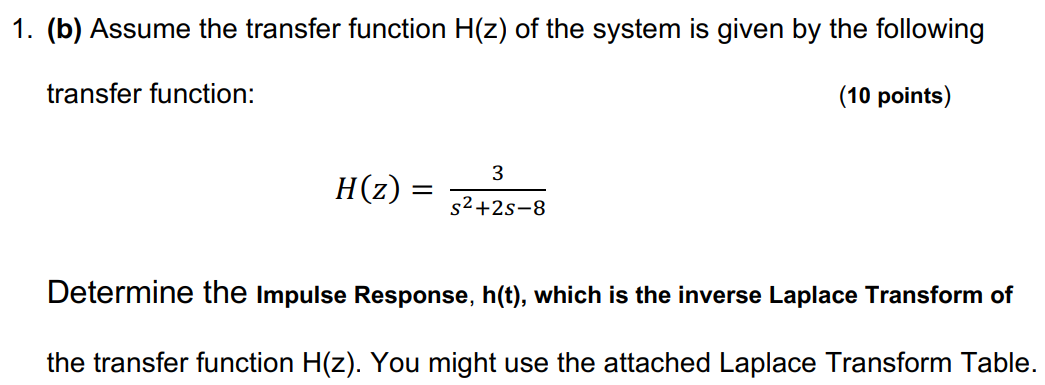(a) An LTI system is described by the following differential equation: (10 points) d2y(t) dt2 + 2dy(t)dt − 8y(t) = 3x(t) Use Laplace Transform to find the Transfer Function, H(s). (b) Assume the transfer function H(z) of the system is given by the following transfer function: (10 points) H(z) = 3 s2+2s−8 Determine the Impulse Response, h(t), which is the inverse Laplace Transform of the transfer function H(z). You might use the attached Laplace Transform Table.

